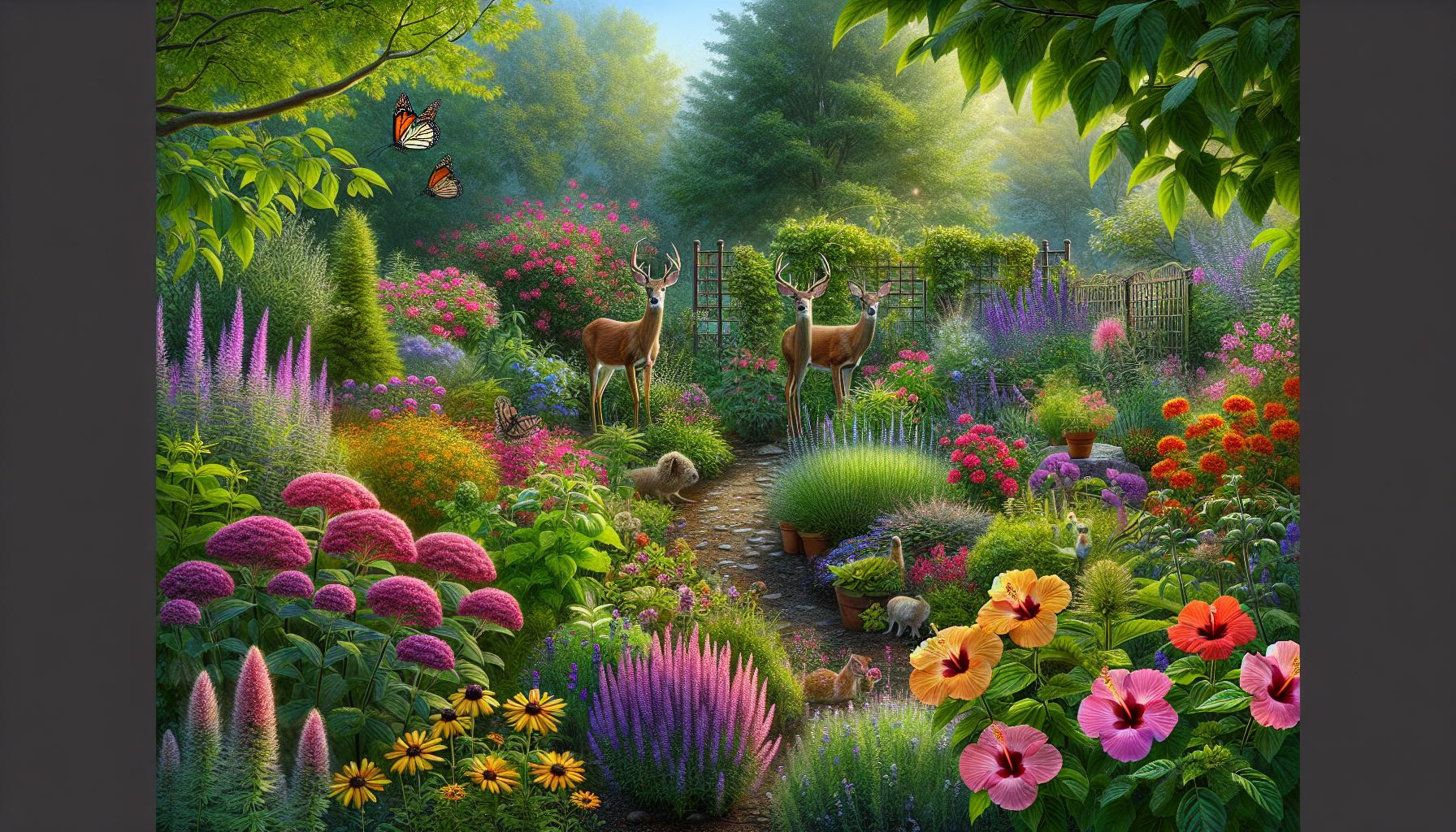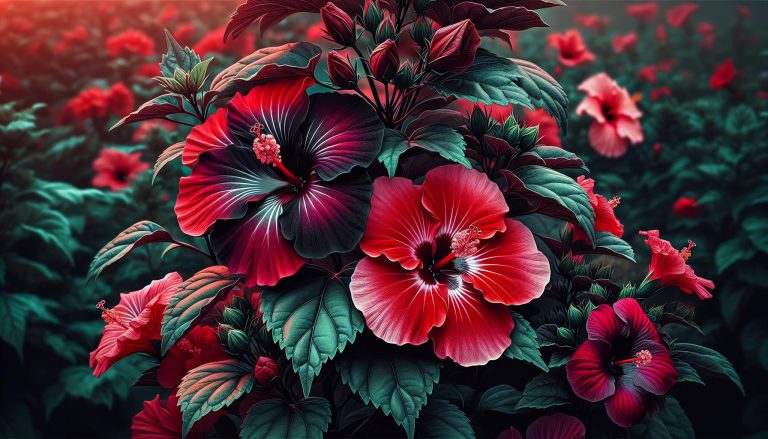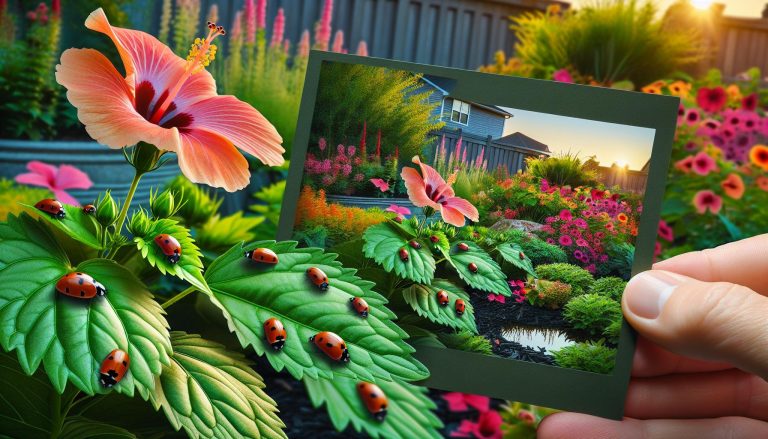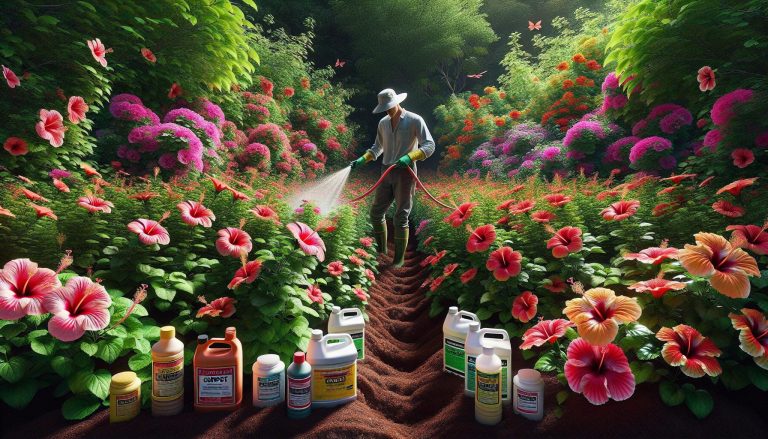Are Hibiscus Deer Resistant? 5 Proven Ways to Protect Your Garden
As a gardener, I’ve often wondered about protecting my beautiful hibiscus plants from hungry deer. These stunning flowers can be a feast for our four-legged friends, but are hibiscus truly deer resistant?
The answer isn’t as straightforward as we might hope. While some gardeners swear by hibiscus as a deer-proof option, others have witnessed their prized blooms decimated overnight. So what’s the truth? Can we grow these tropical beauties without fear of deer destruction? In this article, I’ll dive into the facts about hibiscus and deer resistance, offering insights to help you protect your garden and enjoy these vibrant flowers.
Understanding Deer Resistance in Plants
Deer resistance in plants isn’t a yes-or-no characteristic; it’s a spectrum. Some plants are highly attractive to deer, while others are less appealing. This resistance is influenced by several factors:
- Taste and texture: Deer prefer tender, succulent plants over tough, fibrous ones.
- Scent: Strong-smelling plants often deter deer.
- Toxicity: Plants with toxic compounds are usually avoided by deer.
- Nutritional value: Deer gravitate towards plants rich in nutrients they need.
Factors affecting deer browsing habits:
- Season: Deer preferences change based on food availability throughout the year.
- Population density: Higher deer populations lead to increased browsing pressure.
- Alternative food sources: Availability of other food options impacts plant selection.
It’s crucial to note that no plant is completely deer-proof. In times of scarcity or high population pressure, deer may eat plants they’d normally avoid. I’ve seen this firsthand in my garden, where typically “resistant” plants became deer snacks during harsh winters.
To better understand deer resistance, plants are often categorized:
| Resistance Level | Description |
|---|---|
| Rarely Damaged | Plants deer avoid except in extreme conditions |
| Seldom Severely Damaged | Plants occasionally browsed, but not preferred |
| Occasionally Severely Damaged | Plants sometimes heavily browsed, especially when preferred foods are scarce |
| Frequently Severely Damaged | Plants often targeted by deer |
Remember, local deer populations may develop unique preferences. What’s resistant in one area might be a deer delicacy in another. Observing your local deer behavior and consulting with nearby gardeners can provide valuable insights into plant resistance in your specific area.
Hibiscus: A Beautiful but Vulnerable Plant
Hibiscus plants are renowned for their stunning, large blooms but often fall prey to deer. Their vibrant flowers and tender foliage make them an attractive target for these garden visitors.
Types of Hibiscus
Hibiscus plants come in various species and cultivars, each with unique characteristics:
- Tropical hibiscus (Hibiscus rosa-sinensis): Large, colorful flowers
- Hardy hibiscus (Hibiscus moscheutos): Cold-tolerant with dinner-plate-sized blooms
- Rose of Sharon (Hibiscus syriacus): Shrub-like with smaller flowers
- Confederate rose (Hibiscus mutabilis): Changes flower color throughout the day
These types differ in size, flower shape, and growing conditions, but all share a susceptibility to deer damage.
Deer’s Attraction to Hibiscus
Deer find hibiscus plants irresistible for several reasons:
- Tender foliage: Soft, new growth is easy to digest
- Nutrient-rich: High in vitamins and minerals
- Water content: Succulent leaves provide hydration
- Lack of deterrents: Few thorns or toxic compounds
Deer particularly target hibiscus during spring and early summer when new growth emerges. In my experience, even established plants aren’t safe from browsing deer.
To protect hibiscus:
- Use physical barriers like fences or netting
- Apply deer repellents regularly
- Plant aromatic herbs nearby as natural deterrents
- Provide alternative food sources away from your garden
Remember, no method is foolproof. Combining strategies often yields the best results in keeping deer away from your prized hibiscus plants.
Are Hibiscus Deer Resistant?
Hibiscus plants aren’t inherently deer resistant. Their vulnerability to deer damage varies based on several factors and the specific behavior of local deer populations.
Factors Affecting Deer Resistance
Hibiscus resistance to deer depends on:
- Plant variety: Some hibiscus species may be less appealing to deer than others.
- Environmental conditions: Drought or food scarcity can increase deer browsing on hibiscus.
- Location: Proximity to deer habitats affects the likelihood of deer encounters.
- Season: Deer feeding habits change throughout the year, impacting hibiscus vulnerability.
- Deer population: Higher deer densities increase the chance of hibiscus damage.
I’ve found that even typically “deer-resistant” plants can become targets when other food sources are scarce. It’s crucial to consider these factors when planning your hibiscus garden.
Deer Behavior and Feeding Patterns
Deer feeding habits significantly impact hibiscus vulnerability:
- Spring and summer: Deer often browse on tender new growth and flowers.
- Fall: They may target hibiscus as other food sources become scarce.
- Winter: Evergreen hibiscus varieties can attract hungry deer.
Deer are crepuscular, meaning they’re most active at dawn and dusk. They tend to:
- Travel in groups
- Revisit areas with favorable food sources
- Adapt their diet based on availability
Understanding these patterns helps in developing effective protection strategies for your hibiscus plants. I’ve noticed that deer in my area are particularly fond of hibiscus buds just before they bloom, making early intervention crucial.
Protecting Hibiscus from Deer
Safeguarding hibiscus plants from deer requires a multi-faceted approach. I’ve found that combining physical barriers with repellents often yields the best results in keeping these beautiful flowers safe from hungry deer.
Physical Barriers
Physical barriers are the most effective way to protect hibiscus from deer. Here are some tried-and-true methods:
- Fencing: Install a deer fence at least 8 feet tall around your garden.
- Netting: Drape lightweight netting over individual plants or small groups.
- Cages: Create wire cages around prized hibiscus specimens.
- Shrub guards: Use plastic mesh tubes to protect young hibiscus plants.
Tip: For added protection, combine fencing with thorny shrubs or plants deer dislike to create a natural barrier.
Repellents and Deterrents
While not as foolproof as physical barriers, repellents and deterrents can help discourage deer from munching on your hibiscus:
- Commercial repellents:
- Spray-on products containing putrescent egg solids
- Granular repellents with predator urine scents
- Homemade solutions:
- Soap shavings hung in mesh bags near plants
- Garlic and hot pepper spray mixture
- Sensory deterrents:
- Motion-activated sprinklers
- Wind chimes or reflective tape
- Companion planting:
- Surround hibiscus with strongly scented herbs like lavender or rosemary
- Intersperse with plants deer tend to avoid, such as daffodils or foxgloves
Remember to rotate repellents and reapply after rain for maximum effectiveness. Combining these methods with physical barriers creates a robust defense system for your hibiscus plants.
Deer-Resistant Alternatives to Hibiscus
For gardeners struggling with deer damage to hibiscus, there are several attractive, deer-resistant alternatives that can add similar beauty to your landscape:
- Butterfly Bush (Buddleia)
- Colorful, fragrant blooms
- Attracts pollinators
- Drought-tolerant once established
- Russian Sage (Perovskia atriplicifolia)
- Lavender-blue flowers
- Silvery foliage
- Heat and drought resistant
- Lantana
- Variety of vibrant colors
- Long-blooming period
- Thrives in hot, sunny conditions
- Coneflower (Echinacea)
- Native wildflower
- Variety of colors available
- Attracts butterflies and birds
- Black-eyed Susan (Rudbeckia)
- Bright yellow daisy-like flowers
- Drought-tolerant
- Easy to grow
These plants offer similar visual appeal to hibiscus while being less appetizing to deer. I’ve found that mixing these alternatives with existing hibiscus creates a diverse, deer-resistant garden.
To further deter deer:
- Plant aromatic herbs like lavender, rosemary, and sage near your flowers
- Use companion planting techniques
- Apply deer repellents as needed
Remember, no plant is entirely deer-proof. Hungry deer may nibble on these alternatives if food is scarce. Combining these plants with other deterrent methods provides the best protection for your garden.
Conclusion
Protecting your hibiscus from deer requires a multi-faceted approach. While these beautiful flowers aren’t naturally deer-resistant, you can create a less appealing environment for deer. By combining physical barriers, repellents, companion planting, and deer-resistant alternatives, you’ll significantly reduce the risk of deer damage. Remember, no method is foolproof, but with persistence and a well-rounded strategy, you can enjoy your vibrant hibiscus blooms without constant worry about deer invasions. It’s all about finding the right balance between protecting your beloved plants and maintaining an attractive garden.







